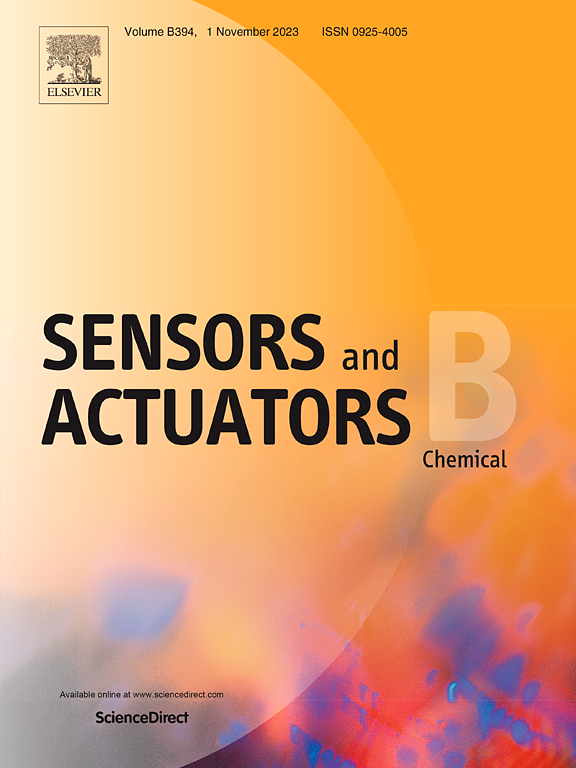柠檬酸定制锗酸镉纳米颗粒:单核细胞增生李斯特菌监测的实时传感平台
IF 8
1区 化学
Q1 CHEMISTRY, ANALYTICAL
引用次数: 0
摘要
食源性单核增生李斯特菌因其高毒力和环境适应性对公众健康构成严重威胁,需要发展传感技术来实时监测早期污染。本研究通过创新地开发了一种柠檬酸辅助的溶胶-凝胶方法,成功地合成了Cd2GeO4纳米颗粒,解决了其特异性代谢标志物乙酰托因的检测瓶颈。这种方法克服了控制锗基材料的纳米结构和表面缺陷状态的关键挑战,这是传统的高温固态或水热方法经常遇到的问题。实验表明,Cd2GeO4传感器对乙酰氨基乙酯具有优异的检测性能。DFT计算表明,(110)晶体平面上的Cd-O位点通过对乙酰蛋白的C=O和OH基团的化学吸附实现了特异性识别。这些发现阐明了乙酰蛋白传感的机制,表明Cd2GeO4可能被用作单核增生李斯特菌检测的新型传感材料。本文章由计算机程序翻译,如有差异,请以英文原文为准。

Citric Acid-Tailored Cadmium Germanate Nanoparticles: A Real-Time Sensing Platform for Listeria Monocytogenes Monitoring
The foodborne pathogen Listeria monocytogenes poses a severe threat to public health due to its high virulence and environmental adaptability, necessitating the development of sensing technologies for real-time monitoring of early contamination. This investigation addresses the detection bottleneck of its specific metabolic marker, acetoin, by innovatively developing a citric acid-assisted sol-gel method that successfully synthesizes Cd2GeO4 nanoparticles. This approach overcomes the critical challenge of controlling the nanostructure and surface defect states of Ge-based materials, which is often problematic with traditional high-temperature solid-state or hydrothermal methods. The experiments demonstrate that the Cd2GeO4 sensor exhibits outstanding performance for acetoin. DFT calculations elucidated that the Cd-O sites on the (110) crystal plane achieve specific recognition through the chemisorption of the C=O and OH groups of acetoin. These insights elucidate the mechanism behind acetoin sensing, suggesting that Cd2GeO4 may be employed as a novel sensing material for Listeria monocytogenes detection.
求助全文
通过发布文献求助,成功后即可免费获取论文全文。
去求助
来源期刊

Sensors and Actuators B: Chemical
工程技术-电化学
CiteScore
14.60
自引率
11.90%
发文量
1776
审稿时长
3.2 months
期刊介绍:
Sensors & Actuators, B: Chemical is an international journal focused on the research and development of chemical transducers. It covers chemical sensors and biosensors, chemical actuators, and analytical microsystems. The journal is interdisciplinary, aiming to publish original works showcasing substantial advancements beyond the current state of the art in these fields, with practical applicability to solving meaningful analytical problems. Review articles are accepted by invitation from an Editor of the journal.
 求助内容:
求助内容: 应助结果提醒方式:
应助结果提醒方式:


